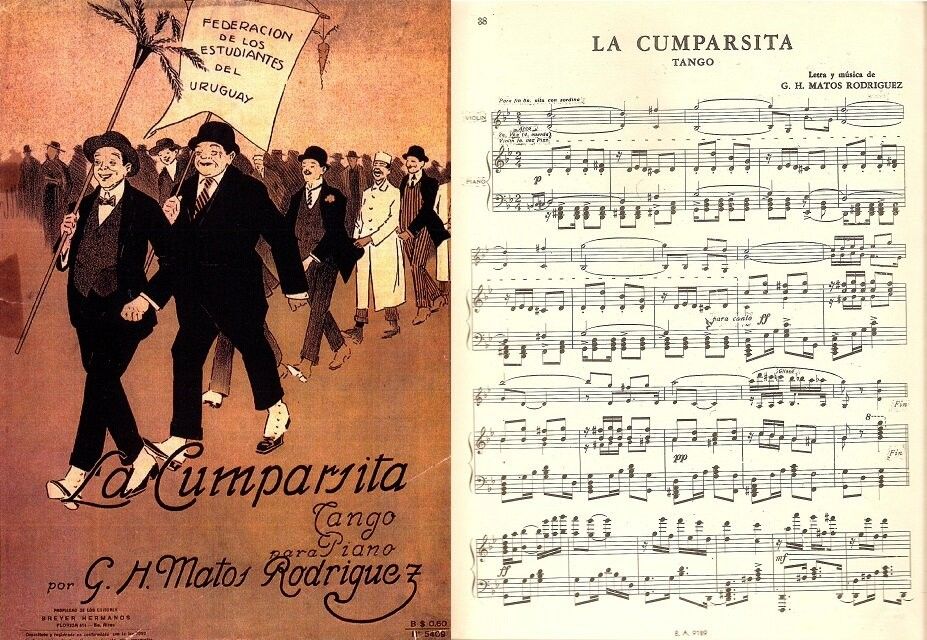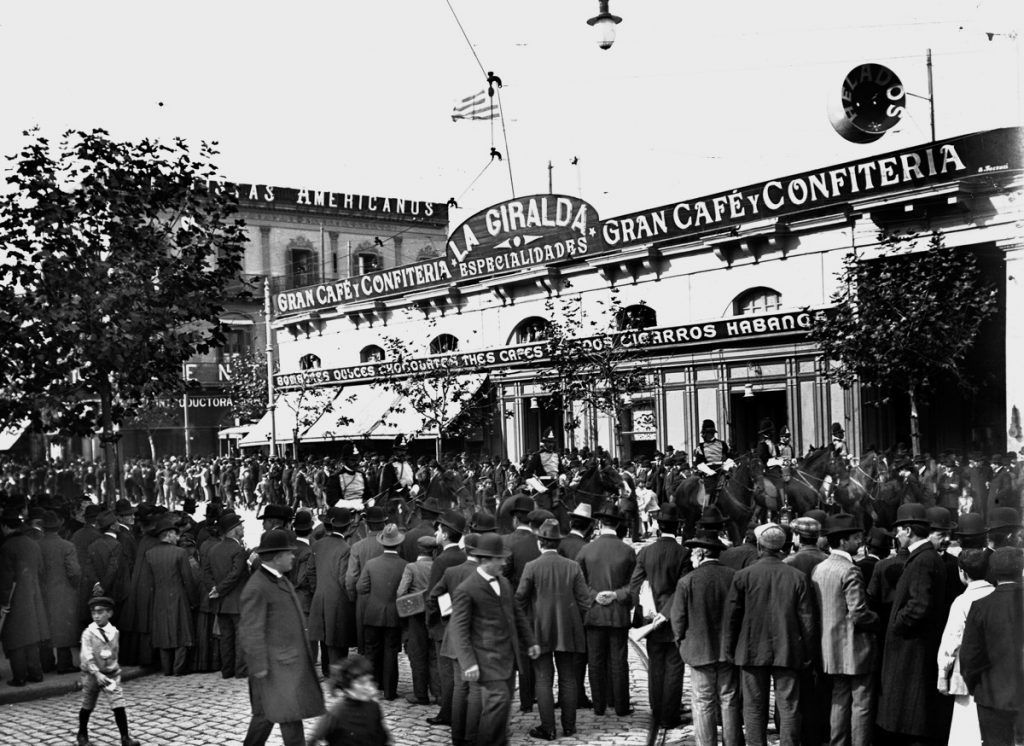The most famous tango of all time - La Cumparsita
There are hundreds of versions of La Cumparsita. Gene Kelly danced to it in 1945 in Anchors Aweigh. Julio Iglesias sang it in the 1990s.
But for tango dancers its significance is that it's the last song of the last tanda in every milonga. When you hear that unmistakeable opening chord progression you know that you've arrived at the bittersweet celebration of the end of the dancing evening.

The story of its composition
The most famous tango song of all time was not written to be a tango. It was composed by a 19 year old Uruguayan as a marching song for students. The name means ‘the little carnival’ (la cumparsa is Spanish for ‘carnival’).
Gerardo Matos Rodríguez wrote ‘La Cumparsita’ in November 1916 in Montevideo, Uruguay. He took his composition to the pianist Roberto Firpo, whose tango orchestra was in residence at La Giralda café at Montevideo.
Firpo said, ‘I got a piano and I remembered two tangos of mine composed in 1906 that had not had any success: ‘La Gaucha Manuela’ and ‘Curda Completa’, and I put a little of each one.’ He played it as a tango with his orchestra at La Giralda that evening.
Firpo took ‘La Cumparsita’ back to Buenos Aires and recorded it 1917. It was released as a B side and didn’t receive much attention until it was re-released with lyrics by Contusi and Maroni in 1924.
Since then it has become the most recognisable of tango songs and has been adapted and recorded more than 2,500 times.
In 1998 it was recognised as a ‘Cultural and Popular Hymn of the Oriental Republic of Uruguay’. In 2009 UNESCO added it to the Representative List of the Intangible Cultural Heritage of Humanity.

The lyrics
The versions of La Cumparsita that you hear in milongas are almost always instrumental only, so it may surprise you to hear that there are not one, but two sets of lyrics to this song.
The original lyrics by the composer Gerardo Matos Rodríguez are:
La Cumparsa de miserias sin fin desfila,
en torno de aquel ser enfermo,
que pronto ha de morir de pena.
Por eso es que en su lecho solloza acongojado,
recordando el pasado que lo hace padecer.
A loose English translation:
The carnival, the parade of endless miseries,
processes around the ill person who will soon die of sorrow.
This is why he sobs in his bed
remembering the past and those who made him suffer
See the full Spanish lyrics on TodoTango
In 1924 Pascual Contursi and Enrique Pedro Maroni wrote new lyrics for the music. This was the version that became popular and was known a long time as ‘Si supieras’.
Si supieras,
que aún dentro de mi alma,
conservo aquel cariño
que tuve para ti…
If you realised,
that still inside my soul,
I hold that affection
I had for you…
The popularity of this version led to a lengthy court battle between Rodriguez and Contursi and Maroni, which eventually resulted in a split of royalties between them and a shared attribution. Legend has it that Roberto Firpo regreted not having added his name to the composition when he made the changes to the original score back in 1916!
Popular versions to dance to
The significance of this song for tangueros is that ‘La Cumparsita’ is always the last song of every milonga. Here are some versions by different tango orchestras that we play at the end of our Wednesday evening practicas in Cambridge:
La Cumparsita, Francisco Canaro (1929) - YouTube
La Cumparsita, Juan D’Arienzo (1961) - YouTube
La Cumparsita, Carlos Di Sarli (1955) - YouTube